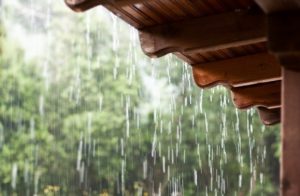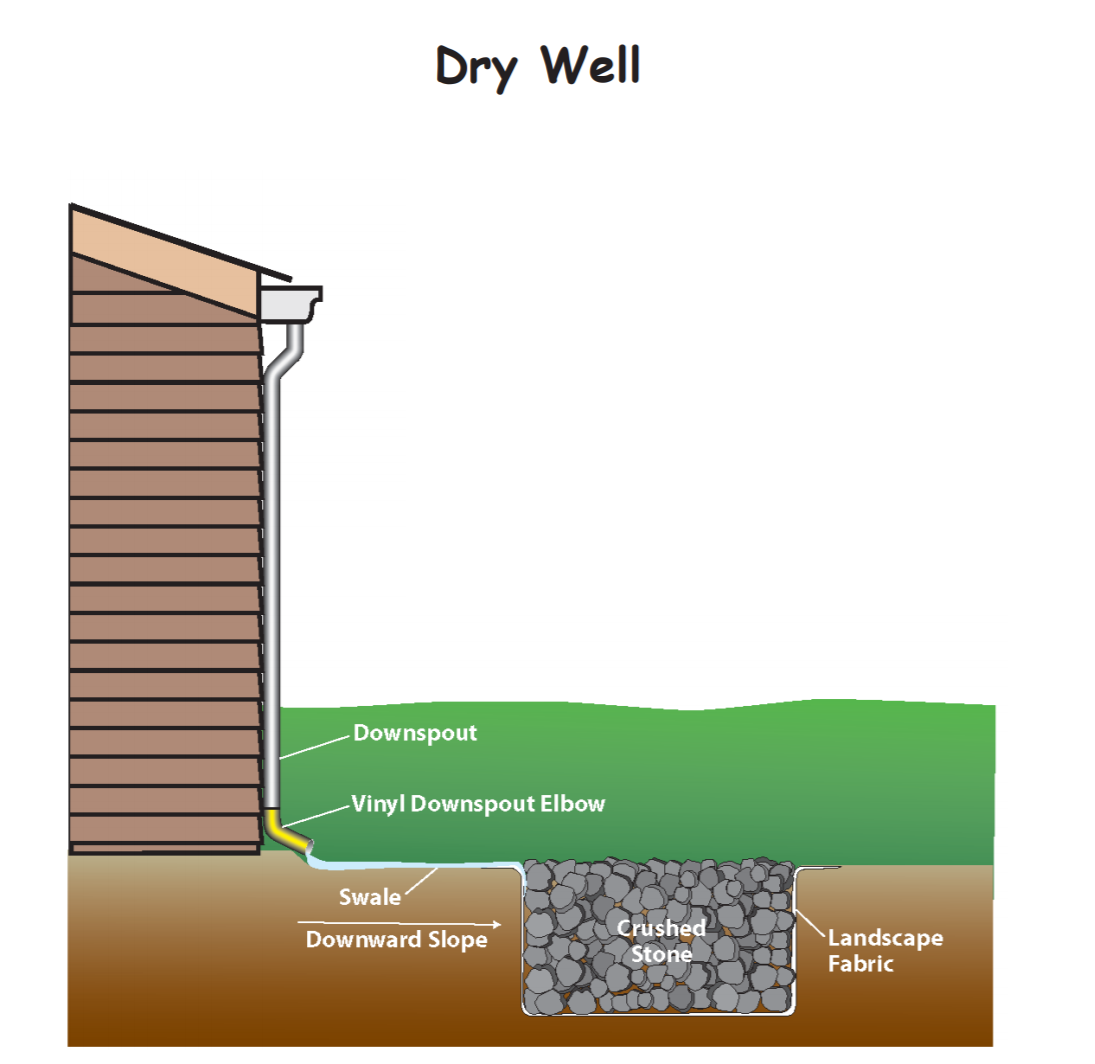

In a recent blog post, “What Is a Rain Garden?” we asked readers if they knew where water goes when it rains. It’s easy to assume that stormwater runoff is captured, treated, and returned to waterways, but that isn’t typically the case. If stormwater isn’t managed, it has the potential to cause building foundation issues, personal property damage, soil erosion, and flooding.
Fortunately, there are several solutions to managing stormwater runoff. In addition to the Rain Garden, property owners may also consider investing in a Dry Well Installation & Seepage Pits for professional drainage solutions.
In this blog post, we’ll review the basics of another common drainage solution and alternative to the Rain Garden, the Dry Well. You will learn exactly what a Dry Well is, what its purpose is, and how these systems are designed and installed.
What Is a Dry Well?
A Dry Well (which can also be called a Seepage Pit) is an underground storage facility that temporarily stores stormwater runoff. Roof leaders (pipes installed to drain water from roof gutters) can directly connect to the Dry Well, which may be a gravel-filled pit (most cost-effective), a prefabricated storage chamber made from plastic or concrete, or a pipe segment. Runoff flows into the Dry Well and then slowly drains (or infiltrates) into the surrounding soil.
the Dry Well and then slowly drains (or infiltrates) into the surrounding soil.
In the event of a heavy storm, or back-to-back storms, where the well may become overwhelmed, an overflow pipe is used to ensure any additional runoff is safely directed downstream.
What’s the Purpose of a Dry Well?
The purpose of a Dry Well is to reduce the volume of stormwater runoff caused by impervious surfaces, most commonly roofs. Roofs are not typically a major source of runoff pollution, but they do contribute to increased runoff volumes. In addition to reducing the volume of stormwater, Dry Wells can also be used to improve water quality and meet local or state groundwater recharge requirements.
Dry Well Design
A good way to visualize the design of a Dry Well is to think of a hole dug in the ground and filled with stone, or one of the structures mentioned above, with a pipe(s) entering near the top allowing it to collect stormwater, and a pipe at the top leading out for the overflow.
There is generally either one foot of soil and grass or stone (think river rock) as the cap of the structure acting to help hide the dry well and sometimes allow it to accept water flowing directly into it from the surface.
Stormwater runoff is directed from roof gutters to roof leaders and then deposited into the well through underground piping. Water is detained in the well temporarily, then moves through its walls and into the surrounding soil. Some also feature a catch basin or sump before water enters the Dry Well for sediment removal, allowing water to be filtered before it enters the Dry Well.
Dry Well Installation
While do-it-yourself projects are common today and work just fine for many different needs, Dry Wells are more complex systems. As such, having a professional survey your property and advise on the best method for location and installation is important.
Costs vary but can range from several hundred to several thousand dollars, so installation is not a project to take lightly. Even small details such as an imperfect slope, compacted base, or an incorrect fitting can render a new Dry Well ineffective.

Image: Philadelphia Water Department
The location of the Dry Well to the water table is another important consideration, as this can affect its performance and result in it overflowing. The system also needs to be appropriately sized to handle the volume of water, which is something a professional can effectively gauge, but the average person may not be able to.
As local municipalities focus increasingly on clean water legislation, proper installation may even become a matter of law. Before installing a Dry Well, check with your local municipality regarding any necessary clearances, components, or specifications they may require. Mandatory inspections may also be necessary, so it’s wise to carefully consider who is installing your Dry Well and evaluate their credentials.
If water exits the Dry Well in the wrong area according to local law, penalties can be applied, as improper routing can negatively affect other bodies of water or neighboring properties.
Work With the Professionals When You’re Ready
When it comes to installing a Dry Well on your property, it pays to discuss the project with your local municipality and a professional Engineering Firm that specializes Stormwater Management. Doing so will ensure that you don’t face any penalties or fines and that you achieve the best result for your property.
If you would like to discuss the options for your property, don’t hesitate to reach out to the team at Carroll Engineering. We would love to work with you to find a solution for stormwater runoff that meets your needs, whether it is a Dry Well or Rain Garden. To learn more about our engineering services, visit our Planning and Site Design service page on our website.
Ready to get started on your next project? Have any questions? Contact John Koutsouros, P.E., Manager of our Planning and Site Design Department at Jkoutsouros@carrollengineering.com or (215)-343-5700 ext. 355.
Featured Image: Gardner/Fox Associates Inc.
